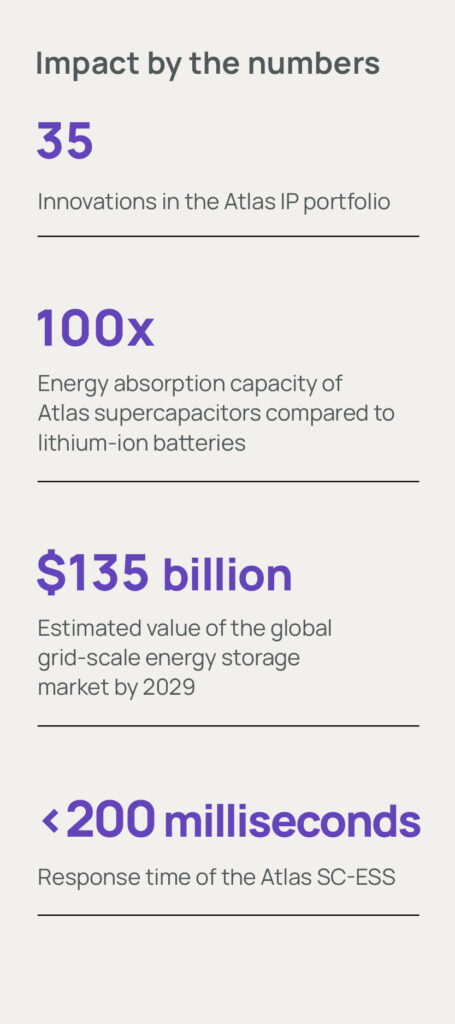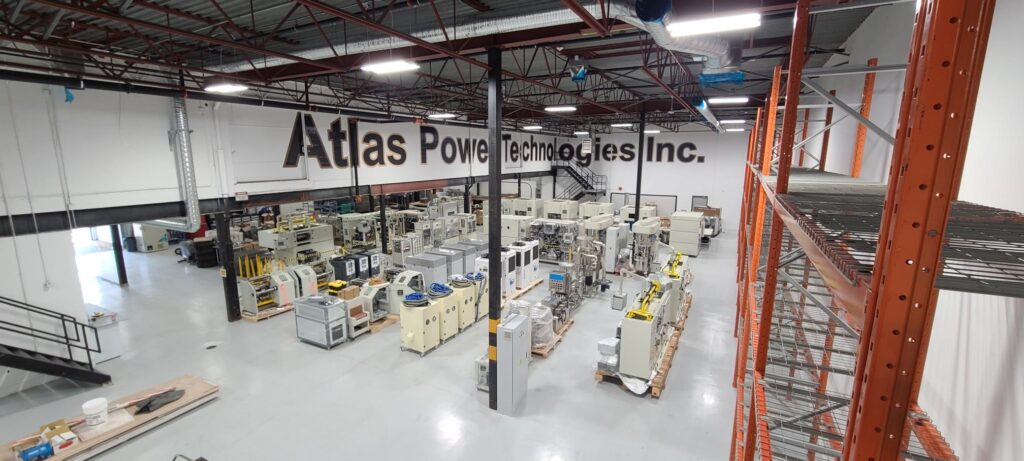

Thirteen days into 2024, Atlas Power Technologies’ CEO Mitchell Miller received a shocking text message warning 4.1 million Albertans to conserve power ASAP as the electricity system was a mere 50 megawatts (MW) away from rolling blackouts. The text from the Alberta Electric System Operator (AESO) used the province’s emergency alert system, and for good reason: With temperatures plunging below -40°C across the prairies, any prolonged outage could be dangerous for households heated with electricity or relying on it to run furnace fans.
Many Albertans were likely unaware of the root cause of the problem: Sustaining the inertia and primary frequency response that is required to meet load spikes or sudden reductions in power generation. This is an increasingly common challenge facing electricity and utilities providers as Canada and the world transitions from dispatchable thermal generation to variable renewable energy sources such as solar and wind that can be compromised by cloud coverage or a sudden lack of wind.
To secure future grid reliability and resilience, Miller and the rest of the 30-member Atlas team have been engineering and commercializing a grid-scale supercapacitor energy storage system (SC-ESS) that can be combined with slower-responding generators such as hydroelectric facilities. This hybridized approach bridges the gap between increases in electricity system loads and the ramping capability from hydroelectric facilities output. (For the uninitiated, a supercapacitor is a device that can quickly absorb and deliver enormous amounts of energy – the Atlas system can handle about 100 times as much as a similarly-sized system based on lithium-ion batteries).
Finding a fix for renewable energy growth
Before Atlas could partner with electricity and utility providers in supporting grid stabilization and renewable energy growth with its SC-ESS, it needed to prove that its unique technology could help overcome these challenges – and that’s where a 2023 non-dilutive investment from the B.C. Centre for Innovation and Clean Energy (CICE) played a vital role.
Mitchell Miller
Chief Executive Officer – Atlas Power TechnologiesA new tool in utilities’ toolboxes
The resulting SC-ESS was so compelling that Atlas recently launched the largest grid-scale supercapacitor project in the world in partnership with TransAlta, Canada’s largest investor-owned renewable energy provider. “In discussions with TransAlta it was determined that the operational performance of our supercapacitors needed to achieve three grid criteria: At least five MW of output, frequency response in 300 milliseconds or less, and one hour of storage duration,” Miller says. “Because supercapacitors are shorter-duration by nature, we came up with a strategy to hybridize our tech with hydro facilities to help stabilize the grid during supply and demand fluctuations.”
Supported by a $6.5 million grant from Emissions Reduction Alberta (ERA), the Atlas SC-ESS bridges the seconds-long gap before hydro power kicks in by outputting high power immediately after a demand spike is detected, Miller explains. “This is another tool in the toolbox of grid operators that they simply did not have before. We’ve had our sights set on this capability for a while now, and to use a hockey analogy we’re skating to where the puck is going to be by partnering with a few large established partners to help drag our technology to a gigawatt-level market that could ultimately be worth hundreds of millions of dollars.”

The ‘next big thing’ in power grid stabilization
As talks continue with other potential partners in Texas and Australia, Atlas is continuing to raise capital and build both its team and its 35-item IP portfolio. The latter includes a patented process, developed in partnership with the University of British Columbia, that transforms mined coal into the electrode-grade activated carbon Atlas uses to manufacture supercapacitors in one of the world’s most advanced facilities on the outskirts of Abbotsford, B.C. “The carbon we use for this process can be derived from any number of sources including coal, pet coke or biomass,” Mitchell explains. “We focus on coal because we have had great success with it, and because it is the cheapest and most mined element on Earth. We use the carbon in coal like you use wood to make a chair, versus using it for firewood.”
The development of this and other clean energy innovations depended on catalyzing and leveraging private investment, and on “hiring people we would not have been able to afford or entice without CICE’s involvement,” Miller says.
